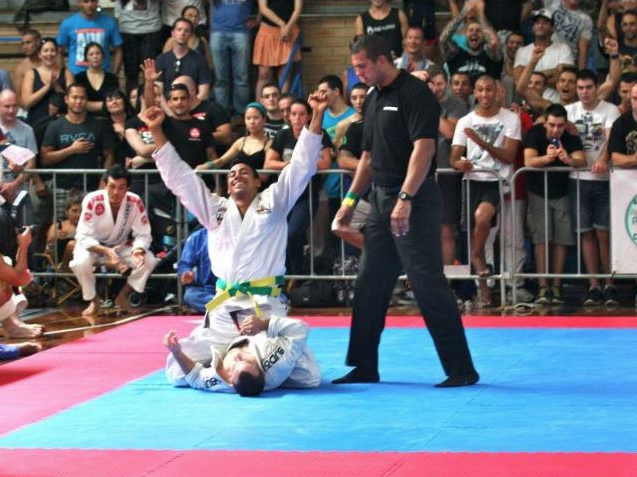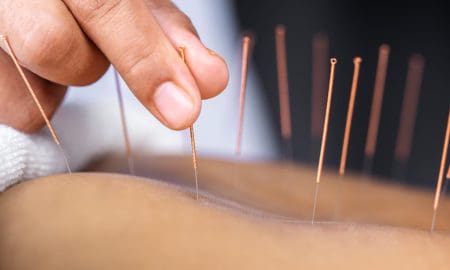
Jiu-jitsu, which means “the gentle art” in Japanese, is a form of martial arts and self-defense that focuses on using an attacker’s force against them rather than directly opposing it. As one of the most popular martial arts practiced worldwide today, jiu-jitsu offers numerous benefits for mental and physical well-being. This ancient art form has continuously evolved over centuries into the practical self-defense and combat sport it is today. This complete beginner’s guide will explore the origins, techniques, health benefits, necessary gear, and tips for getting started in jiu-jitsu.
Origins and History
The origins of jiu-jitsu date back over 2,000 years to India, where Buddhist monks trained in various unarmed combat techniques. These early methods traveled alongside Buddhism, first to China and eventually to Japan, where they were refined and developed into a formal martial arts system. The term “jiu-jitsu” itself was first coined in the 17th century when various styles of jujutsu (unarmed combat techniques) were unified into one combat system.
Over the next few centuries, jiu-jitsu became essential to samurai warrior training and was periodically refined as battlefield tactics evolved. By the late 19th century, with the dissolution of the samurai class in Japan, the focus of jiu-jitsu shifted from combat for self-defense and warfare to sport, exercise, and spiritual development. As Japanese emigrants traveled worldwide throughout the 20th century, they brought jiu-jitsu with them, leading to the international proliferation of various schools and styles today.
Key Techniques and Concepts
Jiu-jitsu focuses on using indirect force, leverage, and proper technique to subdue an opponent. Practitioners learn a variety of holds, throws, joint manipulations, and strikes, both unarmed and armed, to disable attackers. However, the key underlying premise is maximum efficiency – defeating an opponent with minimal effort by appropriately utilizing their force against them.
This strategic non-resistance principle distinguishes jiu-jitsu as a “gentle art.” By redirecting momentum and energy rather than opposing it head-on, jiu-jitsu enables smaller, weaker combatants to defend against larger aggressors successfully. No brute muscular strength is required. Instead, success relies on focused awareness, proper technique, and practice.
Some essential concepts emphasized in jiu-jitsu include:
- Weight distribution: Properly distancing yourself and distributing body weight for optimal stability, balance, and maneuverability.
- Breaking the opponent’s balance: Getting your attacker off balance to limit their options.
- Pain compliance and submission hold: Applying joint locks and chokeholds to force an opponent to submit.
- Takedowns and throws: These are different techniques for subduing and bringing an opponent to the ground to pin, restrain, or submit them.
These universal concepts form the foundation of most jiu-jitsu schools, though the specific techniques taught can vary widely between styles.
Health and Fitness Benefits
Beyond its value as a self-defense system, jiu-jitsu offers numerous physical and psychological health benefits:
Cardiovascular Fitness
The constant movement and athletic maneuvers in jiu-jitsu significantly improve cardiovascular health. An intense “rolling” (sparring) session can burn over 800 calories per hour. With regular training, jiu-jitsu practitioners continuously enhance their stamina, endurance, and ability to exert peak effort over longer durations.
Muscular Strength
Jiu-jitsu conditioning develops functional strength throughout the entire body without isolation. Grappling involves gripping, pulling, lifting, bearing weight, escaping constraints, and supporting yourself in various positions – all of which build total body power. Core strength is also tremendously improved through the constant stabilization required. Regular practice sculpts an athletic and toned physique.
Reflexes and Coordination
The quick reactions and complex movements demanded in grappling hone razor-sharp reflexes and improved coordination. Jiu-jitsu practitioners develop heightened proprioception and response time to changing situations. Fluidity and control of body motions are refined with dedicated practice.
Mental Toughness
Beyond the intense physical demands, jiu-jitsu’s live sparring tests mental and emotional resilience. Pushing through fatigue, stress, discomfort, or fear builds grit and strengthens self-control. Withstanding and escaping submissions or constraints also nurtures confidence, composure, and focus under pressure—valuable traits even off the mats.
Along with these athletic attributes, jiu-jitsu can also lower stress levels, release endorphins, and promote overall well-being through satisfaction from learning a new skill. The close bonds formed and communal support inherent to most jiu-jitsu schools also contribute to participants’ mental health.
Necessary Gear
Jiu-jitsu requires minimal gear to get started. At most gyms, everyday workout clothes like t-shirts, shorts, and sweats are perfectly acceptable for beginners. While a jiu-jitsu uniform (gi) may eventually become necessary, here is the essential protective gear required:
Mouthguard – Protects teeth and jaw. Moldable “boil and bite” mouthguards are inexpensive and easily customizable.
Groin protector – Essential for males to avoid injury during grappling exchanges. It must fit securely without hindering movement.
Handwraps – Support wrists and prevent finger sprains. Anchor Velcro closure ensures a snug fit.
Headgear – Optional protective padding to shield ears and head from friction burns. Generally unnecessary for beginners.
Purchasing a properly fitted mouthguard is essential for this basic gear before your first class. Protecting the head and groin can wait until you commit to regular training. Most reputable gyms will also have loaner gear available for new students.
Once serious training begins, a jiu-jitsu Gi is strongly recommended for comfort, durability, and functionality.
Tips for Getting Started
If you’re intrigued by the physical and mental challenges of jiu-jitsu, here are some tips to smoothly progress as a beginner:
Find the right gym – Look for an academy focused on fun, safe training with plenty of beginners. Avoid hardcore competitive gyms initially.
Go consistently—Attend classes regularly to ingrain techniques. Skipping classes will severely stall progress. Establish a consistent weekly schedule.
Tap early, tap often – “Tapping out” means submitting to end a grapple hold safely. Don’t try to fight out and risk injury. Check your ego.
Relax and breathe. Panic and tension hamper learning. Stay calm and focused, and keep breathing steadily. Being relaxed maintains flexibility and responsiveness.
Ask questions – Good beginner questions after the class signal engagement, not ignorance. Always be bold and ask instructors to clarify techniques, concepts, or training methods.
Following these tips will help you safely integrate into the gym, accelerate your improvement, avoid discouragement, and maximize enjoyment as you discover the incredible challenges and rewards of jiu-jitsu.
Conclusion
Jiu-jitsu is a profoundly rewarding practice requiring no prior experience or advanced athleticism, only the desire to learn proper technique through consistent training. Gain proficiency in an ancient, practical self-defense martial art, achieve new physical prowess, and reap enormous mental health benefits. From triumphant beginnings as a samurai combat discipline to its current global status as a popular martial art and competitive sport, jiu-jitsu offers valuable skills for practitioners of all ages and abilities. Anyone up for the challenge will discover an incredible journey ahead through “the gentle art.”

















Follow Us